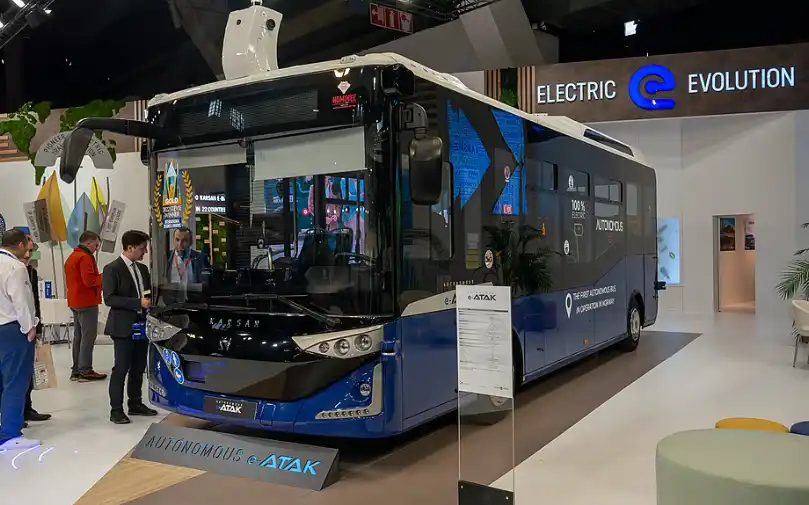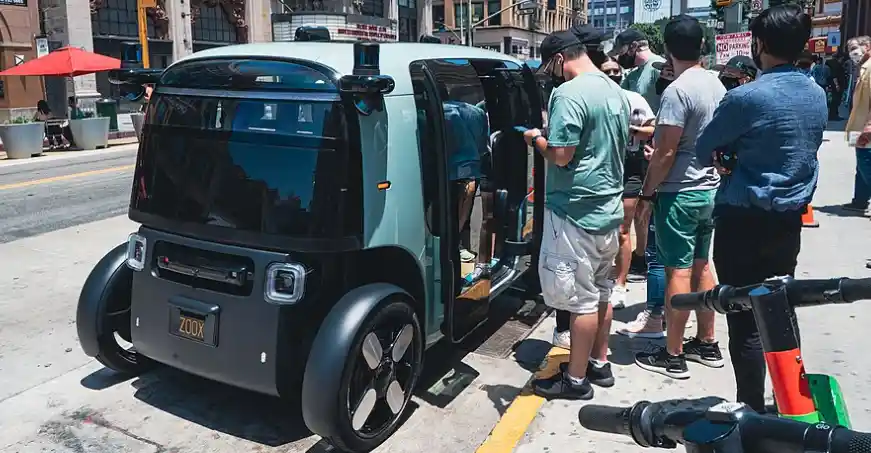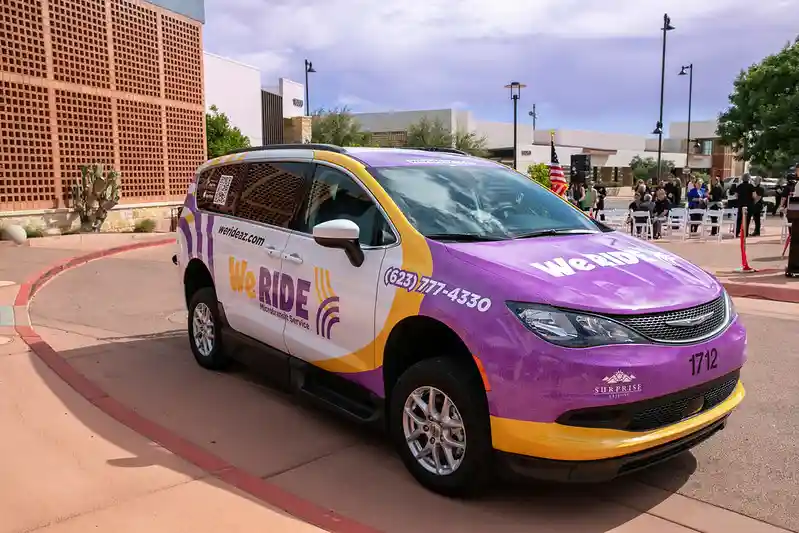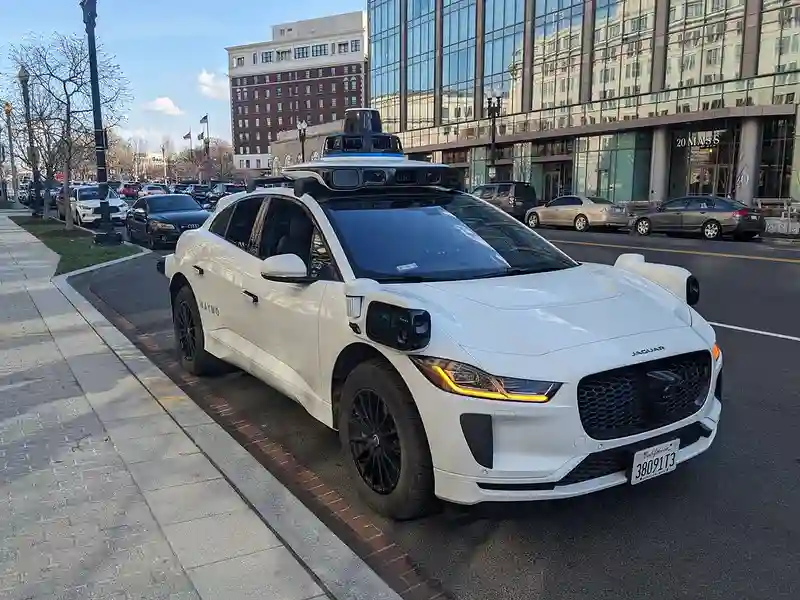When humans drive, they’re often distracted, angry, drowsy, and going through a whole range of human emotions…
Even when we humans are operating at peak efficiency, our Stone Age-adapted brains cannot comprehend the complexity and speed surrounding high-speed driving. There’s as much as a 2.5-second lag between our perceiving and our reaction speeds when we’re traveling at 60 miles/hour (96 km/hour).
That means that the car will be travelling at least two basketball court lengths before the driver can even hit the brake. However, the good news is there are much, much better drivers who have everything that human drivers don’t: they can make faster high-speed decisions, they don’t get drunk or angry, and they don’t require sleep.
Because they’re AI.
We’re embracing the future in every way on Autonomous Vehicle Day celebrated annually on May 31. Self-driving cars have usually lived either on the silver screen or in our imaginations, but science and technology have worked together to make them a reality in more ways than we’d imagined.
Back to the Future: A Brief History of Autonomous Vehicles
What if we were to tell you that the world’s very first autonomous vehicle hit the streets, or rather, took off in 130 B.C.? Well, it wasn’t exactly what you’re imagining right now, but we’re talking about a magic carpet supposedly flying King Phraates II of Parthia into battle! Even though this is possibly a myth, self-driving cars have a longer history than you think.
We do know for sure that in the 1860s, English engineer Robert Whitehead developed the very first effective self-propelled naval torpedo. It was followed by Army engineer Francis Houdina’s “Phantom Car” in 1925 in New York, with locals calling it so because no one was driving it. General Motors introduced the idea of commercial autonomous vehicles in 1939, even as new remote technologies developed in the 1960s and 1970s. It was in 1977 that engineer Sadayuki Tsugawa and his colleagues unveiled the first autonomous vehicle at Japan’s Tsukuba Mechanical Engineering Lab.
In October 1994, at the final international presentation of the Prometheus project on Autoroute 1 in Paris, VaMP and its twin VITA-2 were the stars of the show. With guests and a safety driver on board, these cars drove more than 620 mi (1,000 km) on a 3-lane highway in normal traffic, with their speeds touching 81 miles/hour (130 km/hour). If that wasn’t enough, they even demonstrated lane changes, autonomously passing other cars after the manoeuvre was approved by the safety driver.
Finally, autonomous vehicles even hit public roads in Finland with driverless electric buses in 2016. So, with all these accomplishments, it was only befitting that Autonomous Vehicle Day was born in 2017 on May 31.

Behind The Wheel With AI
The self-driving car revolution is already here, having moved beyond the conception stage. While they’re being tested on the streets in some cities, other destinations are already seeing them in use as public taxis.
We’ve already had Tesla developing the Cybercab, it’s purpose-built autonomous taxi. Now, there’s also Google’s extremely popular Waymo, which stands for “Way Forward in Mobility.” The tech giant has harnessed AI to create this self-driving car, which works with sensors attached to its sides and atop it.

These sensors continually shoot out lasers that bounce back, “telling” the car where other objects are precisely. It continues to be the frontrunner in autonomous vehicles, testing its robotaxi services on San Francisco highways in early 2024. After partnering with EV (electric vehicle) company Zeekr to test robotaxis on public roads in San Francisco, paid weekly robotaxi rides jumped from 50,000 per week in May 2024 to 100,000 in September 2024.
Waymo isn’t the only player out there currently. There’s also Robotaxi by WeRide, an autonomous driving tech, and the world’s very first publicly-traded robotaxi company. In 2024, it successfully brought robotaxis to the streets of Abu Dhabi and Dubai by partnering with Uber, the world’s largest mobility/delivery firm, aiming to do the same in 15 more cities in the next 5 years.
It’s just the start of the great autonomous vehicle revolution. Uber is partnering with an increasing number of driverless tech companies all over the world. It announced strategic partnerships with both American auto-driving tech firm May Mobility and Chinese intelligent driving tech company Momenta to expand and offer robotaxi rides to more cities in the United States and Europe respectively. It even has had a multi-year agreement since 2023 with Waymo to offer driverless food deliveries through Uber Eats, as well as a similar partnership with AV Ride as well.
The Autonomous Way Ahead
According to a Boston Consulting Group report, nearly 25% of “all miles driven” in the US will be from shared self-driving cars by the year 2030. Even ABI Research estimates that there will be nearly 11 million shared driverless vehicles worldwide by 2030 – which translates to 5% of the world’s traffic population.
Their aerial counterparts might still be in the conceptual phase, but the technology to not only build, but also market, sell, and place driverless cars safely and securely on our streets is already here – and it intends to rule the world.
In case you missed:
- Seabed Security: A Deep Dive Into Underwater Robotics Technology
- Can AI Modernise Legacy Systems?
- AI + Web3: Making A Smarter Internet
- The Pi Mainnet Launch – What It Heralds For The Pi Coin and Pioneers
- From Memecoin To Meaning
- The Era of Oversharing Online: Data Privacy Concerns
- Memecoins: Scheme-Coins Or Valuable Digital Assets
- How AI Can Transform Disaster Management
- Agentic AI and its Future in the Fintech Revolution
- Crypto Heists: How To Keep Your Cryptocurrency Safe?












